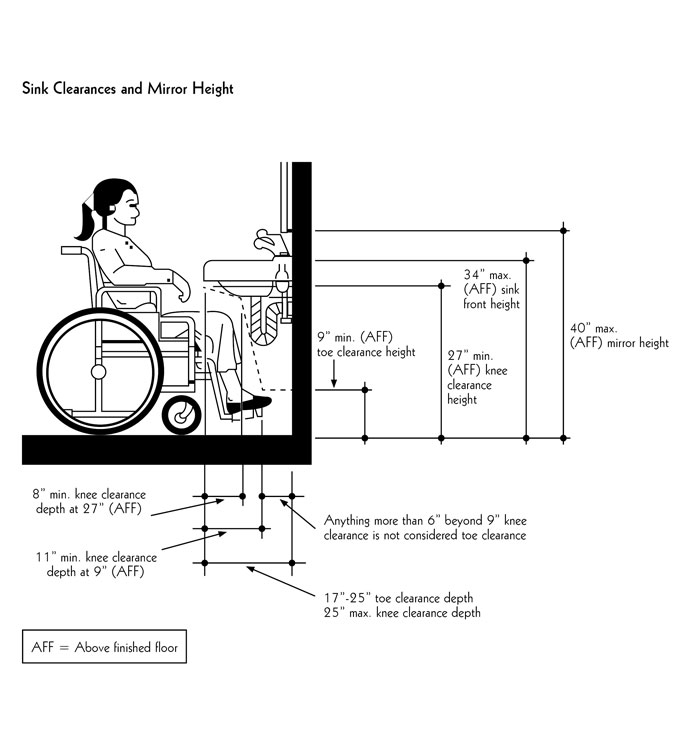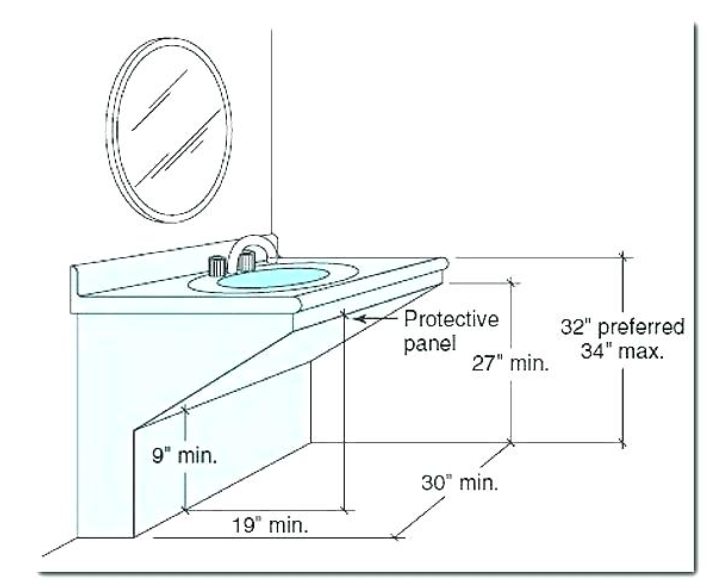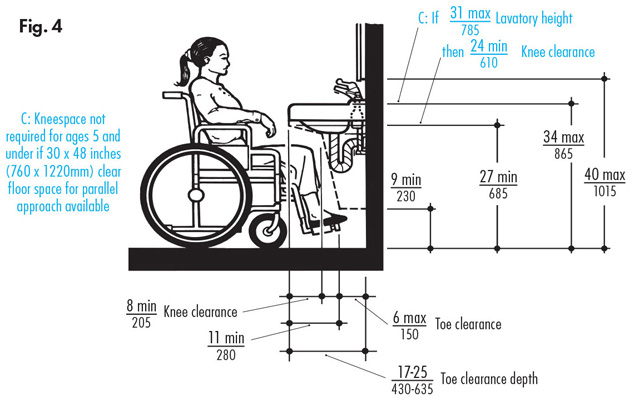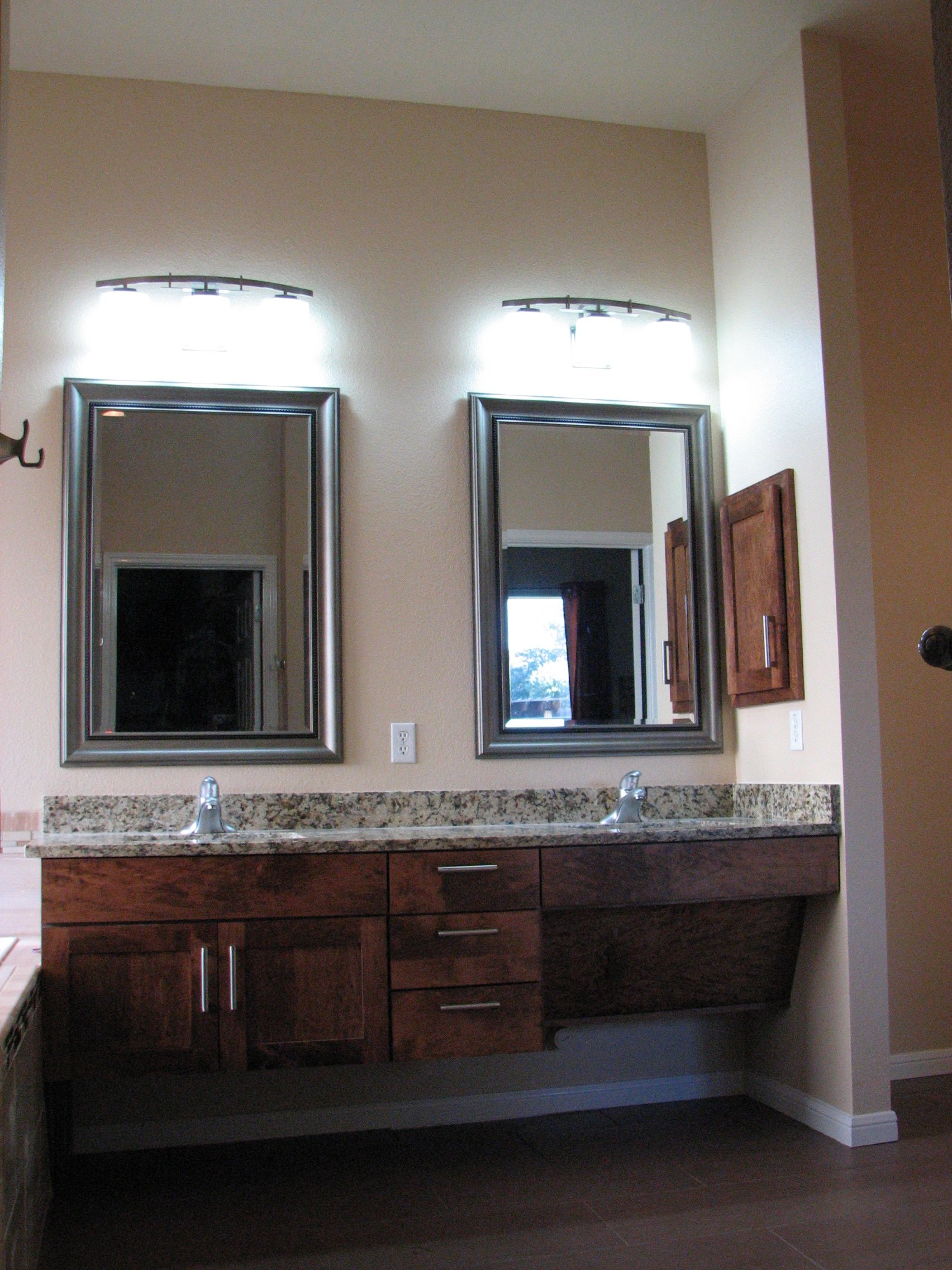Designing a wheelchair-accessible bathroom vanity requires careful consideration of dimensions to ensure functionality and comfort for users with mobility challenges. The dimensions of a wheelchair-accessible bathroom vanity are crucial in providing adequate space for wheelchair users to approach and use the sink independently. The ideal height of a wheelchair-accessible bathroom vanity should be within the range of 29 to 34 inches, allowing individuals in wheelchairs to comfortably reach the sink and its fixtures. This range ensures that the vanity is at an appropriate height for users of various wheelchair sizes, providing a more inclusive and accessible environment.
In addition to height considerations, the depth of the bathroom vanity is essential. A wheelchair-accessible vanity should have a depth of at least 17 to 19 inches beneath the sink to accommodate a wheelchair user’s knees and provide enough space for maneuvering. This clearance allows for optimal accessibility and ensures that wheelchair users can comfortably use the sink without feeling restricted. The width of the clear floor space in front of the bathroom vanity is another critical dimension to consider. A minimum of 30 inches of clear space is recommended to allow for easy maneuverability, enabling wheelchair users to approach the vanity and use the sink with ease.
Furthermore, selecting fixtures and accessories with user-friendly design features enhances the overall accessibility of the bathroom vanity. Lever-style faucet handles, for instance, are easier to operate for individuals with limited hand dexterity. Additionally, choosing a vanity with open storage space beneath the sink can provide knee clearance and allow wheelchair users to access items stored under the vanity more conveniently. By paying attention to these dimensions and incorporating thoughtful design elements, a wheelchair-accessible bathroom vanity can significantly contribute to creating a more inclusive and accommodating bathroom space for users with mobility challenges.
The dimensions of a wheelchair-accessible bathroom vanity play a pivotal role in ensuring that individuals with mobility challenges can use the sink independently and comfortably. Height, depth, and clear floor space in front of the vanity are critical considerations to accommodate wheelchair users effectively. Choosing fixtures and accessories with user-friendly features further enhances the overall accessibility of the bathroom space, promoting inclusivity and allowing individuals with disabilities to maintain independence and dignity in their daily routines.
Adjusting Your Home Now for Future Accessible Living Needs Ada
ADA Compliant school stainless steel sinks
ADA Bathroom Planning Guide – Mavi New York
Important ADA Restroom Requirements For Your Commercial Space
ADA Compliant school stainless steel sinks
Accessories in Public Restrooms ADA Guidelines – Harbor City Supply
ADA Compliant Bathroom Vanity
ADA Bathroom Layout Commercial Restroom Requirements and Plans
Handicapped Bathroom Ada bathroom, Bathroom sink design
Related articles:
- 6 Bulb Bathroom Vanity Light
- Bathroom Vanity Linen Cabinet Sets
- Bathroom Vanity Plans Woodworking
- Bathroom Vanity Tops Quartz
- Bathroom Vanity With Electrical Outlet
- All Wood Bathroom Vanity
- Bathroom Vanity Set With Linen Tower
- 3 Drawer Bathroom Vanity
- Euro Bathroom Vanity Combo Set
- Standard Bathroom Vanity Height And Depth
Wheelchair Accessible Bathroom Vanity Dimensions
Creating an accessible bathroom for those with physical impairments can be a challenge. While there are many considerations to take into account, one of the most important is the size and shape of the vanity. Getting this right is essential for making a wheelchair-friendly bathroom. In this article, we will discuss wheelchair accessible bathroom vanity dimensions and provide helpful information on how to ensure your vanity is suitable for those with physical impairments.
What Are the Standard Dimensions for a Wheelchair Accessible Vanity?
When it comes to designing a wheelchair accessible bathroom, several standards should be taken into account. The most important of these is the minimum width and height of the vanity. The standard dimensions for a wheelchair-accessible vanity are as follows:
- Width: The minimum width should be 36 inches wide, although some larger vanities may need to be up to 48 inches wide if the user needs additional space to maneuver.
- Height: The height of the vanity should be between 30 and 34 inches, depending on the height of the user.
- Depth: The depth should be between 14 and 18 inches, allowing enough room for all necessary items such as towels and toiletries.
These dimensions provide enough space for a wheelchair user to comfortably access the sink area while still allowing them to reach all necessary items.
What Other Considerations Should Be Taken Into Account?
In addition to the standard dimensions, several other considerations should be taken into account when designing a wheelchair accessible bathroom vanity. These include:
- Clearing Space: It is important to ensure that there is sufficient clearance space around the vanity so that a wheelchair user can easily move in and out of the area without hindrance. Ideally, there should be at least 24 inches of clearance around the vanity on all sides.
- Accessibility Features: When choosing a vanity, it is important to consider any accessibility features such as grab bars or knee-space compartments that may be needed by someone in a wheelchair. These features can help make it easier for someone in a wheelchair to access items stored beneath the sink or use other parts of their bathroom safely and comfortably.
- Positioning: It is also important to consider where in the room you will place your vanity so that it is easily accessible from both sides of the room. This will allow people in wheelchairs to move around more freely and easily access any items they need without having to reach over or around obstacles.
- Size: Finally, it is important to select a vanity that fits well in your bathroom space without looking too large or too small. You want your vanity to blend in with your existing decor without overwhelming it so that it looks aesthetically pleasing as well as functional for those using wheelchairs.
FAQs about Wheelchair Accessible Bathroom Vanity Dimensions
What type of material should I use for my wheelchair accessible bathroom vanity?
When selecting materials for your vanity, you should look for durable materials such as stone or stainless steel that are easy to clean and maintain. These materials will ensure your vanity lasts longer while still providing an attractive finish in your bathroom space. Additionally, you may want to consider adding slip-resistant surfaces such as textured tiles or rubber mats near the sink area so that people using wheelchairs can remain secure while using this part of their bathroom safely and comfortably.
What other features should I look for when selecting my wheelchair accessible bathroom vanity?
When selecting a vanity for your wheelchair accessible bathroom, it may be helpful to look for features such as adjustable heights or drawers with easy-pull handles which can make accessing items easier for someone using a wheelchair or mobility aid. Additionally, you may want to consider adding additional storage solutions such as shelves or cabinets underneath your sink area which can help keep items organized and out of sight until needed.
How much space do I need around my wheelchair accessible bathroom vanity?
You should aim for at least 24 inches of clearance space around your vanity on all sides so that someone using a wheelchair has enough room maneuver around safely and easily access any items they need from their sink area without hindrance or obstruction.
Creating A wheelchair accessible bathroom vanity is an important step in making your home or business more accessible to those using wheelchairs. By taking into consideration the necessary dimensions and other considerations such as clearance space, accessibility features, positioning and size, it is possible to create a space that is both aesthetically pleasing and functional for those using wheelchairs.










